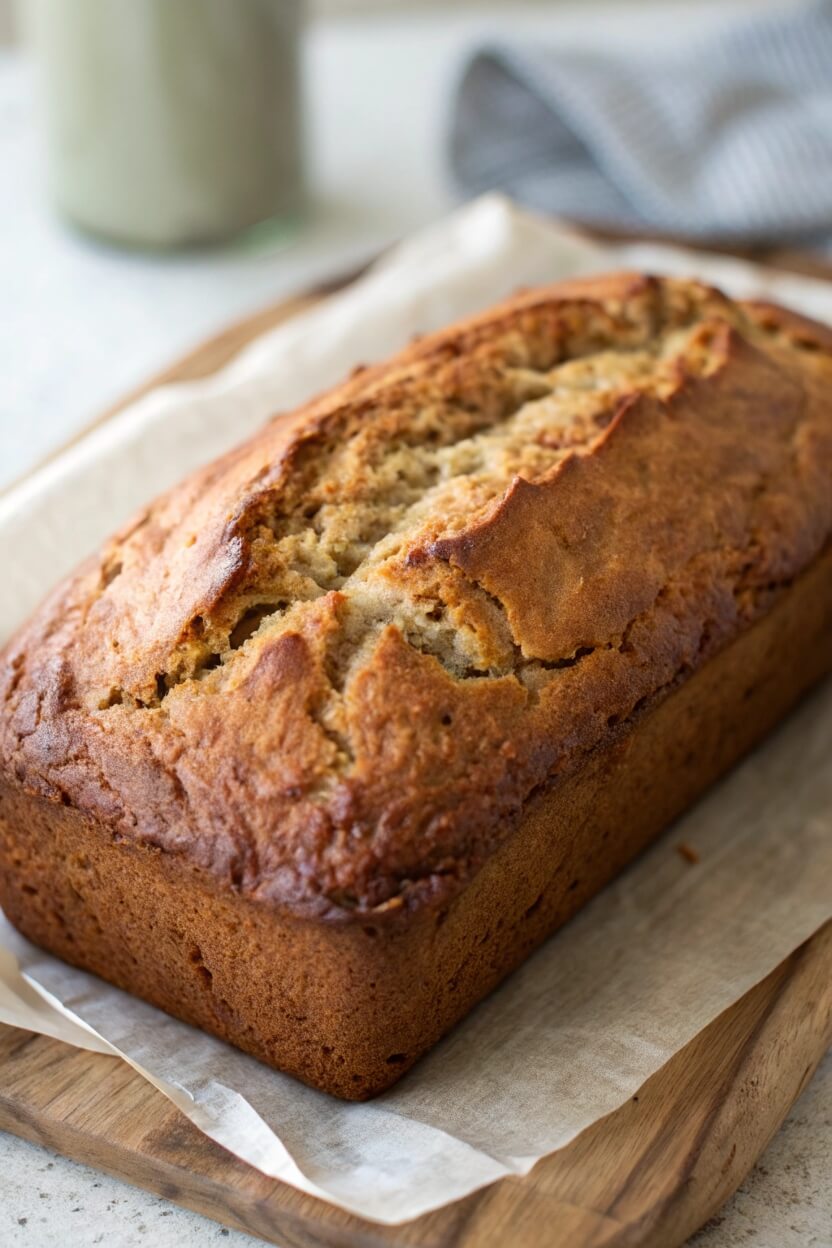Preheat and Prepare: Preheat your oven to 350°F (175°C). Thoroughly grease and flour a 9×5-inch loaf pan. Alternatively, line the pan with parchment paper, leaving an overhang on the two longer sides to easily lift the bread out later. Set aside.
Combine Dry Ingredients: In a medium-sized bowl, whisk or sift together the all-purpose flour, baking powder, baking soda, and salt. This helps to distribute the leavening agents evenly and aerate the flour. Set this dry mixture aside.
Cream Butter and Sugar, then Add Wet Ingredients: In a large mixing bowl, using a handheld electric mixer or a stand mixer fitted with the paddle attachment (or even a sturdy whisk and some elbow grease!), cream together the softened butter and granulated sugar until the mixture is light in color and fluffy. This usually takes 2-3 minutes.
Beat in the room-temperature eggs one at a time, mixing well after each addition until fully incorporated. Scrape down the sides of the bowl as needed. Stir in the vanilla extract.
Next, gently stir in the mashed bananas and the buttermilk until just combined.
Combine Wet and Dry Ingredients: Gradually add the dry ingredient mixture to the wet ingredient mixture. Mix on low speed or by hand with a spatula until just combined. Be very careful not to overmix at this stage; a few small lumps in the batter are perfectly fine. If using, gently fold in your optional add-ins (chocolate chips, nuts, etc.) now.
Bake the Banana Bread: Pour the batter evenly into your prepared loaf pan, spreading it gently to the corners.
Bake in the preheated oven for 50-60 minutes, or until a wooden skewer or toothpick inserted into the center of the loaf comes out clean, or with a few moist crumbs attached (but no wet batter). Baking times can vary slightly depending on your oven.
Cool and Serve: Once baked, remove the loaf pan from the oven and place it on a wire cooling rack. Let the banana bread cool in the pan for 10-15 minutes. This allows it to set slightly and makes it easier to remove.
After 10-15 minutes, carefully run a thin knife or spatula around the edges of the pan (if not using parchment overhang) and then invert the banana bread onto the wire rack to cool completely. For the neatest slices, it's best to wait until the bread is fully cool before slicing.
Serve warm or at room temperature. It's delicious on its own, or with a spread of butter, Nutella, or peanut butter. Enjoy!
